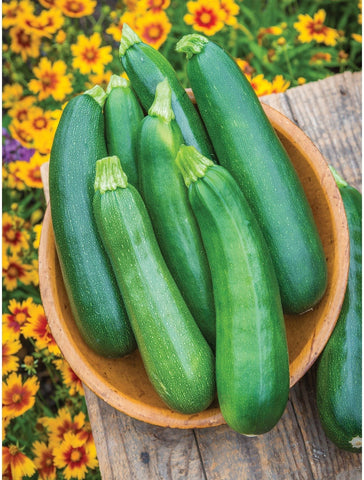Are raised flower beds better for growing vegetables? This is an issue that provokes discussion and controversy. In modern society, vegetable planting has become more and more people's concern and pursuit. At the same time, raised flower beds are also becoming more popular among garden enthusiasts, and they are believed to provide a better planting environment and more advantages. But are raised flower beds really better for growing vegetables?The following content also has some reference value for raised garden beds.
This article will explore the advantages of raising flower beds, adaptability, and various factors related to vegetable growing to help us better understand the issue. Whether you are a gardening enthusiast who is passionate about growing vegetables or someone who wants to learn more about raising flower beds, this article will provide you with helpful information and perspectives. Let's dig deeper and see if raised flower beds are really better for growing vegetables.
Part 1: Elevating the flower bed to your advantage
Raising flower beds has some advantages when it comes to vegetable growing, here are some of them:
- Drainage: Raising the flower bed can improve drainage performance, especially suitable for growing vegetables. When rain or irrigation water enters the flower bed, the raised bottom ensures that the water is quickly discharged and the soil does not accumulate water. This is very important for vegetable growth and root health.
- Soil control: Raising the flower beds allows you to better control the quality and nutrient content of the soil. You can mix the right amount of organic fertilizer and improve the soil as needed to provide the ideal environment for vegetable growth. In addition, raising the flower beds can also reduce the impact of weeds and pests in the soil.
- Ease of management: Raising the flower beds makes it easier for you to manage and maintain vegetables. Because the beds are raised, you don't have to bend over or squat, making planting, pruning and weeding easier. This is very convenient for the daily management and harvest of vegetables.
- Root protection: Raising the flower bed can protect the roots of vegetables from external damage. Small animals, insects and pests on the ground can damage the root system of vegetables, and an elevated bottom can reduce these problems.
Part Two: Raise the adaptability of the flower bed
Although raising flower beds has advantages when it comes to growing vegetables, there are some adaptive factors to consider:
- Vegetable variety selection: Not all vegetable varieties are suitable for growing in raised flower beds. Some vegetables, such as carrots and Onions, need deeper soil, while some shrub vegetables, such as tomatoes and eggplants, need more room to grow. Therefore, it is crucial to choose vegetable varieties suitable for raising flower beds.
- Water management: Raised flowerbeds are more likely to dry out than above-ground flowerbeds and therefore need to be watered more frequently. Vegetables have higher water requirements, so you need to ensure that the water in the raised flower bed is properly managed to meet the growing needs of the vegetables.
- Temperature regulation: Raised flower beds may be affected by temperature changes because they are further from the ground. In cold seasons, flower beds may be more susceptible to cold air, while in hot seasons, flower beds may be more susceptible to hot and dry weather. Therefore, you need to pay attention to temperature regulation and the need to protect vegetables.
Part Three: Comprehensive evaluation
Considering the advantages and adaptability of raising the flower bed, a comprehensive assessment is very important. Here are some suggestions:
- Define your goals: First, define your goals for growing vegetables. If you want to increase water drainage, improve soil quality, and make it easier to manage and maintain vegetables, raising flower beds may be a good option.
- Understand vegetable needs: Before deciding to grow vegetables, it is important to understand the growth needs of different vegetable varieties. Make sure to choose vegetable varieties that are suitable for elevated flower bed environments and understand their moisture, soil and temperature requirements.
- Comprehensive consideration: comprehensive consideration of personal circumstances, variety selection and environmental factors. You can choose to partially raise the flower beds to meet a portion of the vegetable needs, while planting suitable vegetable varieties on the ground.
Raised flower beds offer several advantages in growing vegetables, such as drainage performance, soil control, ease of management, and root protection. However, adaptive factors and vegetable variety selection also need to be considered. When deciding whether to use raised flower beds to grow vegetables, individual needs, vegetable varieties, water management and temperature regulation need to be considered. Most importantly, according to the actual situation and personal preference, let's continue to explore some of the ideas that raising the flower bed is more suitable for growing vegetables:
Prevent soil pollution: Raising flower beds can effectively prevent soil pollution. The soil above ground can be affected by pollutants (e.g. chemicals, heavy metals), and raised flower beds can prevent plants from coming into direct contact with these pollutants. This is especially important for organic vegetable farming, as they are often required to be grown in pollution-free soil.
- Space efficiency: Raising the flower beds can make more efficient use of space. In limited courtyard or garden space, raised flower beds can grow multiple layers of vegetables in a vertical direction, thus increasing the planted area and improving the yield. This is especially beneficial for those with limited space.
- Easy harvesting and long-term planting: Raising the flower beds makes vegetable harvesting easier. Since the flower beds are in an elevated position, you can easily harvest vegetables without bending over or squatting. In addition, elevated flower beds allow for better control of soil quality and nutrient content, making long-term planting more feasible.
- Reduce pests and germs: Elevating flower beds can reduce the risk of some pests and germs. Because the flower bed is far from the ground, some common ground pests and germs may not be able to easily enter the flower bed, thus reducing the possibility of plant damage. This helps reduce reliance on pesticides.
It should be noted that raised flower beds are not a perfect solution, and there are still some limitations and challenges. Here are some things to consider:
- Cost and complexity: Raising flower beds usually requires more material and labor costs. Building a stand or base may require additional investment, and some specialized knowledge and skill may be required to complete the construction process.
- Water management and drying issues: Raised flower beds are more likely to dry out than those on the ground, requiring more frequent watering. Therefore, water management is an issue that requires special attention to ensure that vegetables receive an adequate water supply.
- Temperature regulation and environmental impacts: Raising flower beds may be affected by temperature changes, especially during the cold season. Measures need to be taken to protect vegetables from cold weather.
In summary, raised flower beds have some obvious advantages when it comes to growing vegetables, such as drainage performance, soil control, ease of management, root protection, prevention of soil pollution, space use efficiency, and ease of harvesting. However, there are also limitations and challenges to consider in terms of cost, water management, temperature regulation, and environmental impact. When deciding to use raised flower beds to grow vegetables, it is necessary to consider the individual's needs, resources, environmental conditions and planting goals. The final choice should be based on your personal preference and actual situation to ensure the healthy growth and harvest of vegetables.









